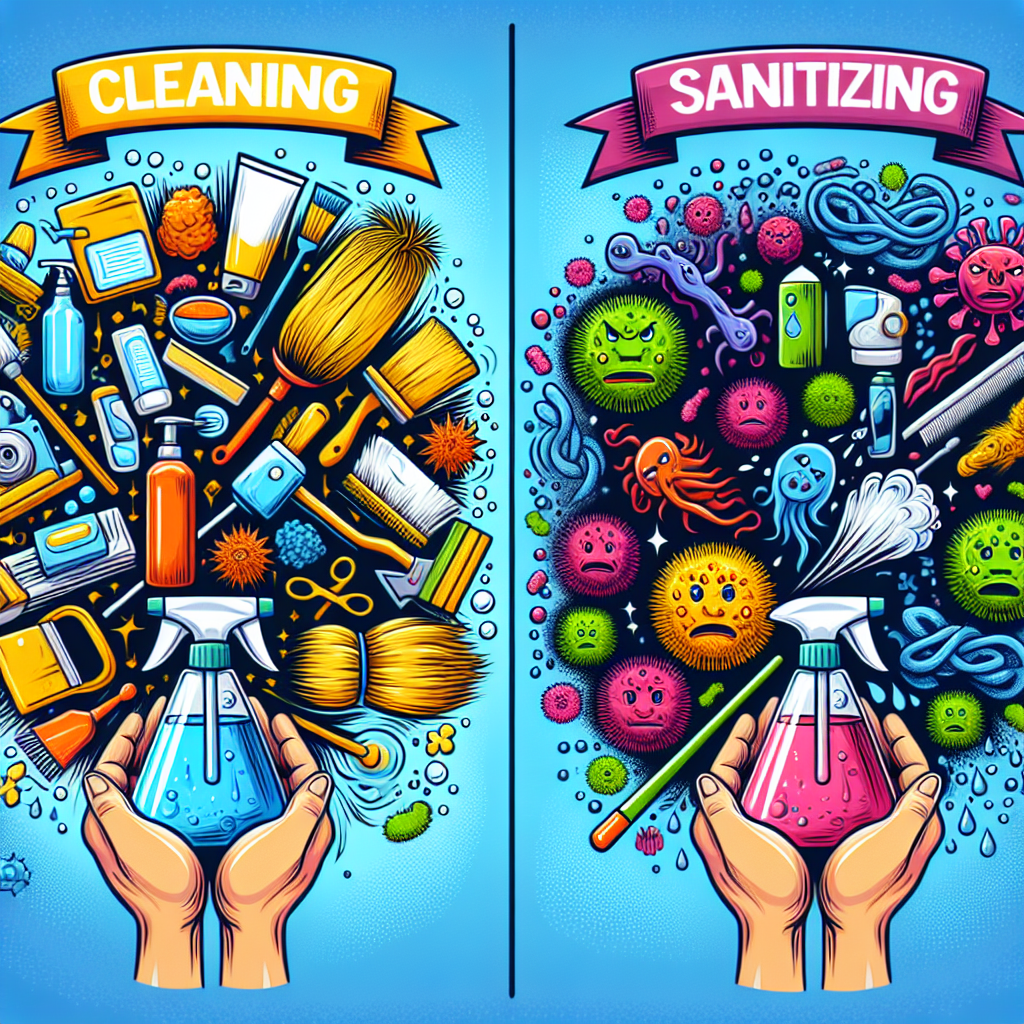In our continually evolving world, cleanliness has taken on a new level of importance. Whether it’s in our homes or workplaces, understanding the difference between cleaning and sanitizing is vital for maintaining a healthy environment. In this article, we’ll delve into the definitions, processes, and key differences between cleaning and sanitizing, so you can make informed decisions for your space.
What is Cleaning?
Cleaning is the fundamental first step in the maintenance of any surface or space. It involves the removal of dirt, dust, debris, and stains from surfaces. But what exactly does this process entail?
The Cleaning Process
- Physical Removal: Cleaning usually involves scrubbing, sweeping, dusting, and using water and soap or other cleaning agents to physically remove contaminants.
- Tools and Supplies: Common cleaning tools include mops, brooms, cloths, and various cleaning solutions designed for specific surfaces.
While cleaning is essential, it does not necessarily kill germs. Instead, it prepares surfaces for sanitizing or disinfecting, making it a crucial step in any cleaning routine.
What is Sanitizing?
Sanitizing goes a step further than cleaning. It specifically aims to reduce the number of bacteria and viruses to a safe level, as established by public health standards.
The Sanitizing Process
- Chemical Agents: Sanitizing typically involves using chemical agents that have been formulated to kill germs on surfaces. These can include commercial sanitizers or naturally derived options like vinegar and baking soda.
- Methods of Application: To ensure maximum effectiveness, sanitizing might require application methods such as spraying or soaking surfaces.
While sanitation does reduce the bacteria present on a surface, it does not necessarily eliminate all viruses and bacteria, which is the goal of disinfecting.
Key Differences Between Cleaning and Sanitizing
Understanding the nuances between cleaning and sanitizing can help you maintain a healthier environment effectively. Here are the main differences:
1. Purpose
- Cleaning: Primarily aims to remove dirt, dust, and contaminants from surfaces.
- Sanitizing: Focuses on reducing harmful microorganisms to safe levels.
2. Process
- Cleaning: Involves physical action—scrubbing and wiping surfaces to remove unwanted particles.
- Sanitizing: Utilizes chemical agents aimed at killing germs, often requiring a certain amount of contact time to work effectively.
3. Items Used
- Cleaning Supplies: Typically consists of soaps, detergents, and scrubbing tools.
- Sanitizing Products: Comprises chemical solutions specifically designed to eliminate germs, often including instructions for use.
4. Frequency
- Cleaning: Should be done regularly; how often depends on usage (like kitchen counters after food preparation).
- Sanitizing: May not need to be performed daily but should occur routinely in high-touch areas like door handles and light switches.
5. Outcome
- Cleaning: Results in visibly cleaner surfaces.
- Sanitizing: Results in a level of surface cleanliness that reduces the risk of illness caused by germs.
When to Clean vs. When to Sanitize
Understanding when to clean and when to sanitize is key to effective hygiene practices. Here are some general guidelines:
- Cleaning: Perform regular cleaning in all areas, particularly where dirt and dust accumulate. This might include floors, countertops, and furniture.
- Sanitizing: Focus on high-touch areas such as bathrooms, kitchen sinks, and frequently used appliances. It’s especially critical during flu season or an outbreak of illness.
Conclusion: Clean and Sanitize for Safety
In summary, while cleaning and sanitizing serve different purposes, both are essential for maintaining a safe and healthy environment. By incorporating regular cleaning into your routine and strategically sanitizing high-touch surfaces, you can effectively reduce the risk of illness in your home or workplace.
Ultimately, understanding the differences between cleaning and sanitizing empowers you to create a cleaner, healthier space for you—and your loved ones. So roll up your sleeves, grab your cleaning supplies, and embrace the dual power of cleaning and sanitizing for a happier, healthier life!


